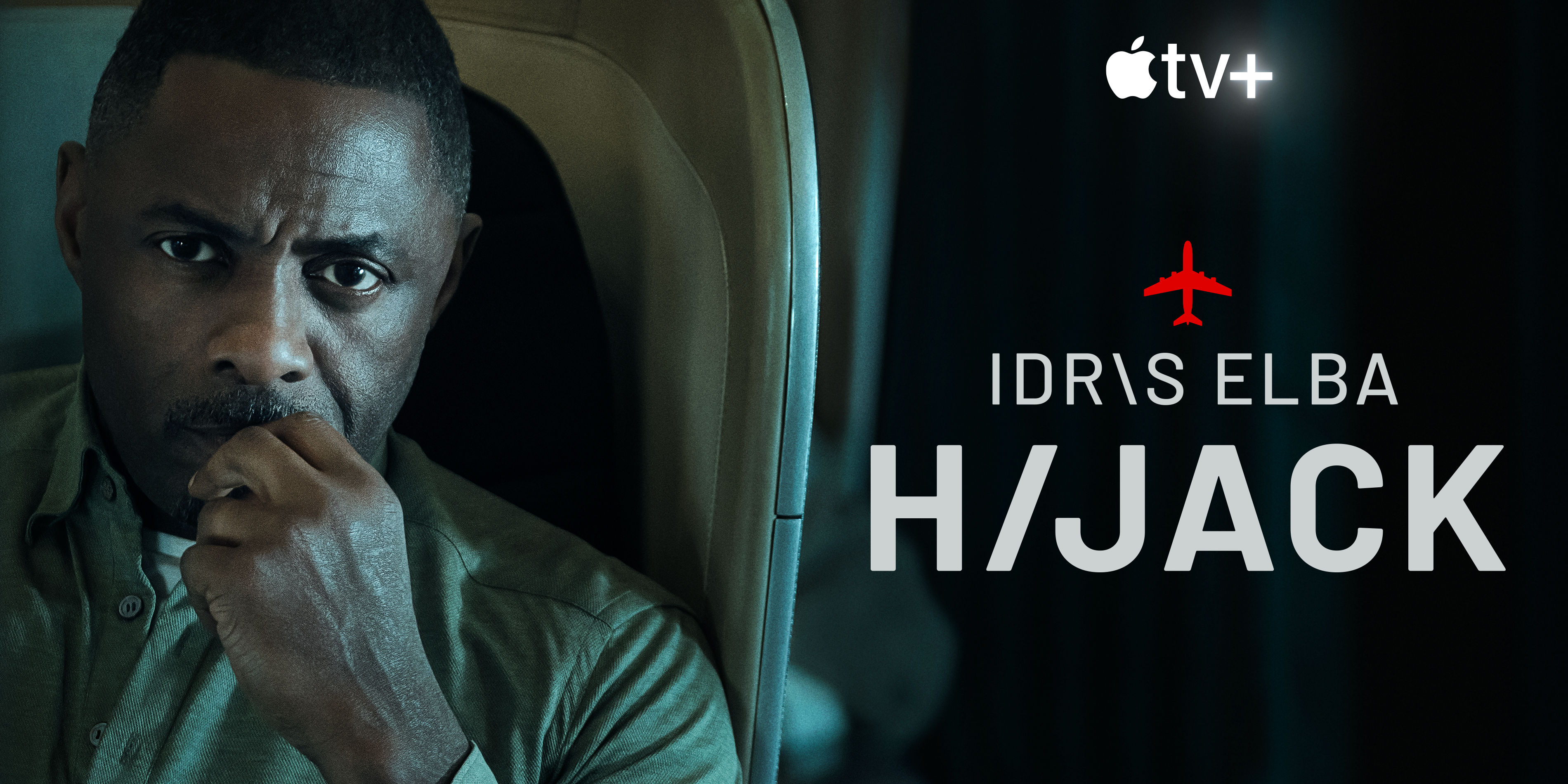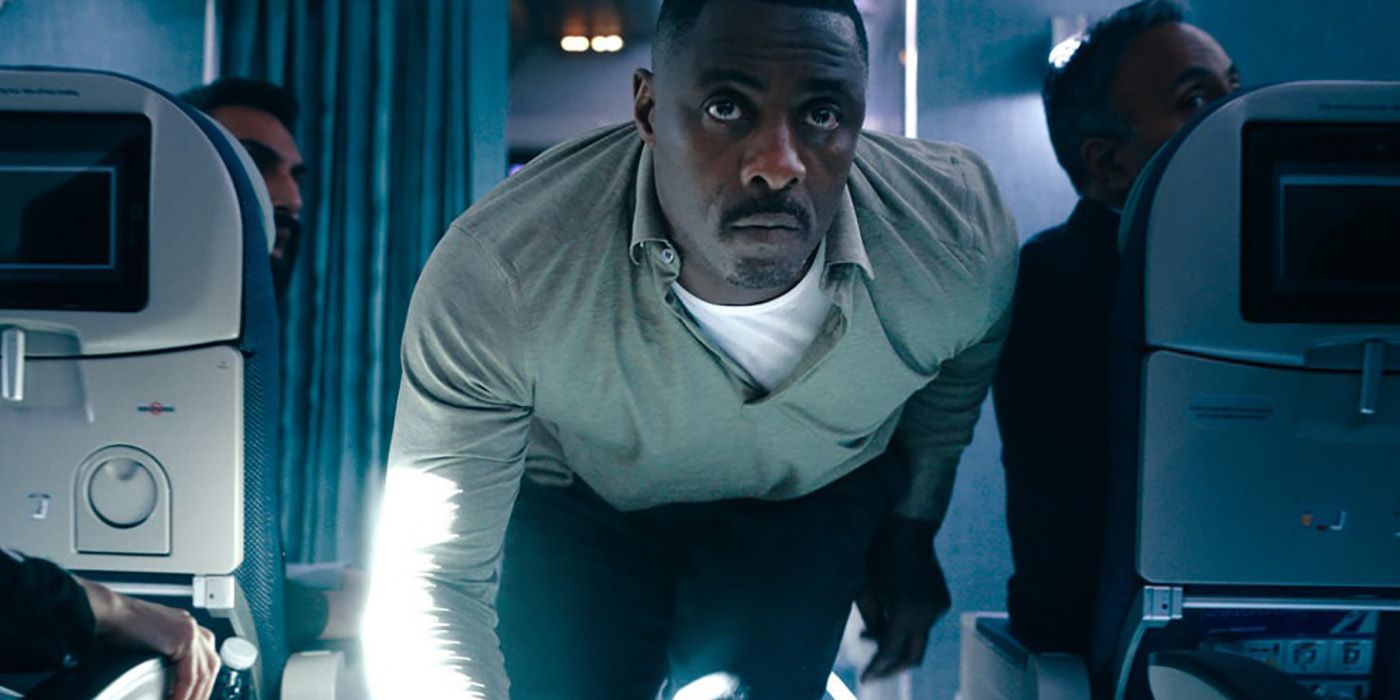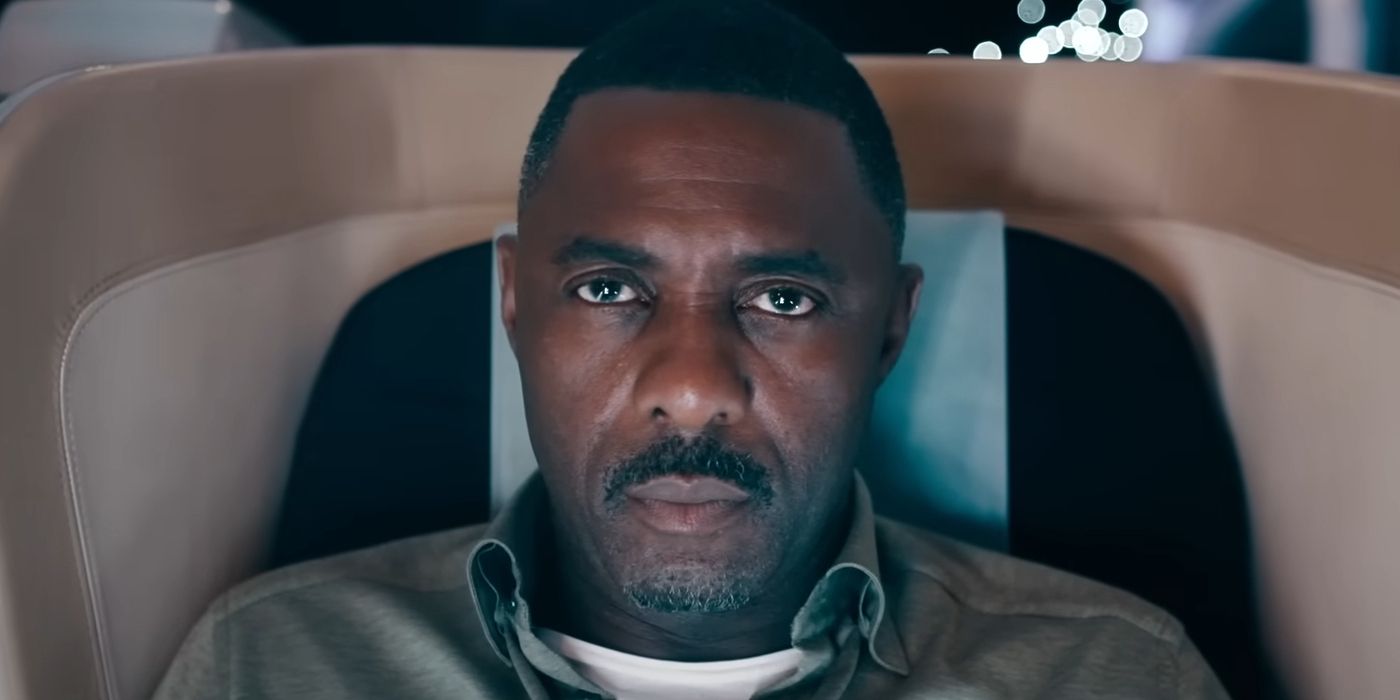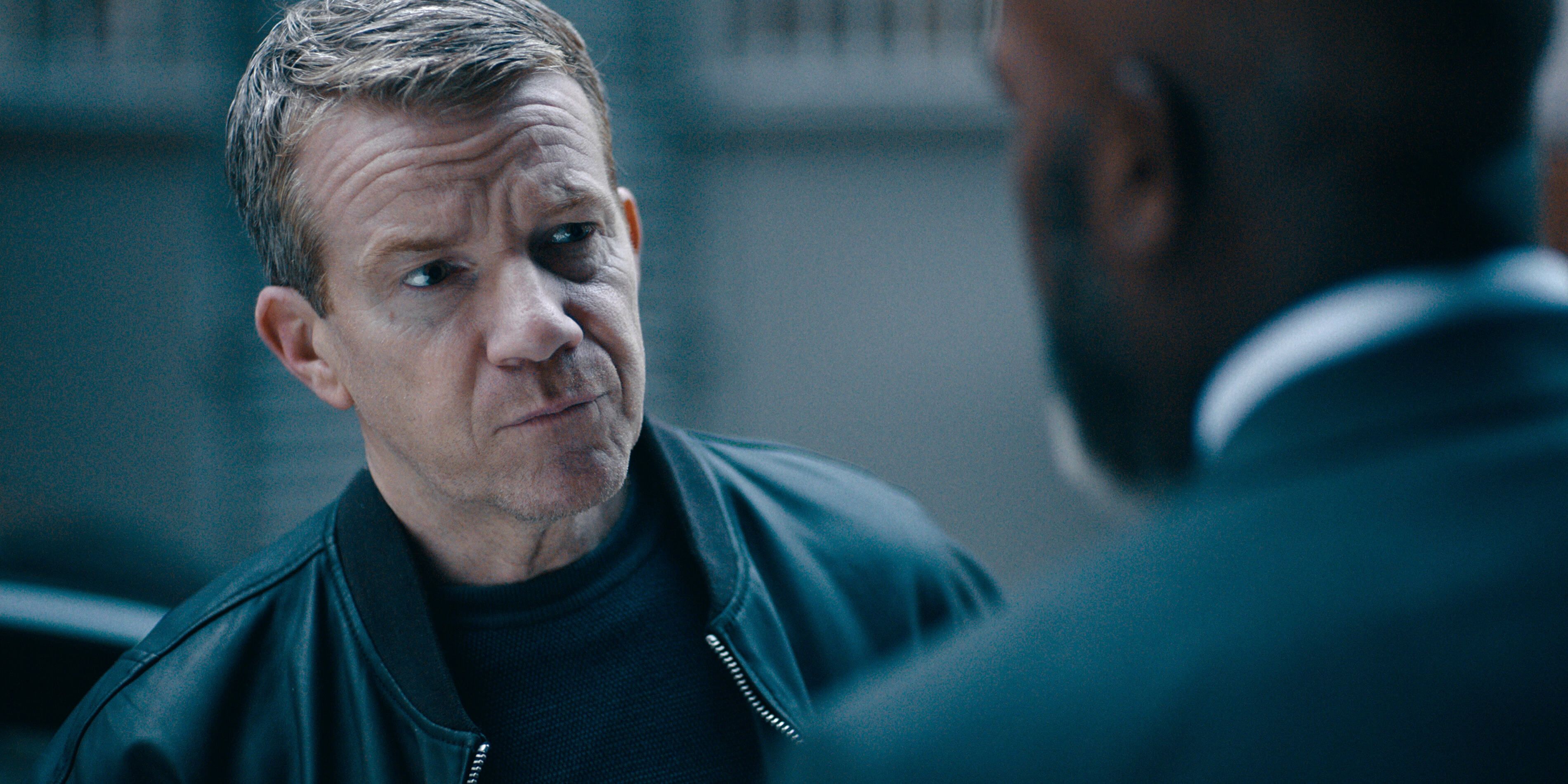The following contains spoilers for Hijack Season 1, available to stream on Apple TV+.
One of the most taut, tightly constructed series of the year is Hijack, the original thriller created by George Kay and Jim Field Smith for Apple TV+. The series stars Idris Elba as business negotiator Sam Nelson, who finds himself on a plane en route to London hijacked by gunmen. The series kept audiences guessing about the hijackers' motives and how Sam would escape across its seven episodes, with plenty of twists and turns along the way.
By the series' conclusion, the airliner has barely averted a crash in downtown London, and Sam is safely back on the ground after a scuffle with the lead hijacker, but the shadowy forces behind the hijacking are still very much on the loose. In an exclusive interview with CBR, Hijack creators George Kay and Jim Field Smith unpacked the tense season finale, share some of the intriguing creative choices made along the way, and hint at the possibilities for a follow-up.
CBR: I wanted to talk about the pacing for the show because each episode escalates up to a cliffhanger ending while the show itself plays in real-time. How was it writing and directing that build-up of tension, slightly resetting the subsequent episode and then building back up again?
George Kay: In terms of writing, you need to build that escalation. The thing that I always think is important is that you can't build to a cliffhanger that you then dispel all the drama from at the start of the next episode because that feels a bit clumsy. Every cliffhanger has to have an ongoing sense of consequence or create a need for it to be properly addressed at the start of the next episode. Try not to do cliffhangers throughout -- there are obvious cliffhangers at the end of Episode 3 and Episode 6 -- we're just moving the characters on where we can. Timing those mega cliffhangers against the average cliffhangers is important.
Pacing is super important within the episodes, because you can't have an ever-escalating ratchet-up of tension. You need time to breathe. I think we both felt that going out of the plane literally gives a bit of oxygen and a chance to breathe -- then the episode starts to build again. The episodes build like that: Tension rises, a bit of a breath, another escalation. It's high-octane. Maintaining tension is harder than building tension, I think.
Jim Field Smith: Yeah, the real-time aspect of it was interesting because, although we're pretty rigid about sticking to the timeline of the flight, we don't allow things to happen off-screen too quickly in comparison to what's happening on-screen. There was definitely a concertina of time in the show because the stuff on the plane often expands the time on the plane because the characters on the plane aren't going to care if they're beholden to this ticking clock because they're in the hijack, whereas the characters on the ground are very much staring at the clock, which is the ETA in London.
The show stays real-time within itself but, within different environments, time compresses and expands slightly. We discovered that was a really good way of moderating the pace and, as George says, moderating the dials of tension as much as we could.
How was it working with the actors and filming the up-close showdown in the finale between Sam and Stuart in such a tight space?
Smith: We definitely wanted to have that moment where those two characters have that one-on-one situation. It really builds to a head in Episode 3 when Stuart is really horrible to Sam. Stuart then goes on his own journey, losing his brother and [we] realize he's not the head honcho, but a pawn in a bigger game. Stuart has gone on this whole rollercoaster ride himself and lost sight of everything. We really wanted those two to face off against each other.
The vast majority of the show is shot in the plane, and as a result, it's all about the claustrophobia. The intensity of it, the fact that you can't move an inch without being seen. Sam is trying to figure out how much freedom he can get away with the hijackers and how much trust he can get with the hijackers. Just being in Sam's head all the time, the power of Idris just watching, listening, and thinking -- a lot of the show exists with the lens just inches from his face. The flip of that in the finale is where the plane is obviously empty.
The one thing that was great for me was being able to put the plane in a different state. We're still trapped in it, it's still our prison for the show. But it's a completely different environment from the one we've been in for the previous seven hours. I wanted it to feel hellish and otherly, and really just be about those two characters and almost nothing else because, in the preceding seven hours, it's about those two. But it's about everyone else as well. It's about that group dynamic. Whereas in that final sequence, it's really about those two finally getting their moment to dance with each other.
We learn that the hijackers themselves are being coerced into doing this and those airline-shorting villains are still on the loose. How did you want to create and present the antagonists for this story?
Kay: We didn't want them to be religious terrorists or anything like that. Organized crime felt like a really good space to look into because people from all backgrounds end up in organized crime. I had also been educated on the fact that young men can get groomed into organized crime. Some charge into it, wanting to be criminals, or they can be pressured, be it older sibling pressure or neighborhood pressure to get involved in this kind of thing.
From the outset, I didn't want to write hijackers who couldn't be redeemed in some way, or at least understood. Even if they're really bad, there's a reason behind it. There's a logic to them acting the way that they are and there's a humanity there to be found. For example, in Episode 4 when Sam is helping Lewis at the back of the plane, he obviously doing it for his own ends and admits as much, but then also starts to care about him slightly.
Especially for the actors, we wanted characters who are three-dimensional rather than just 2D cut-outs. We also always knew that they weren't going to be the real big bad. That makes them much more interesting when conceiving them, because you know that they're victims too. There's a phrase, "Everyone is hijacked now." It's very clear in the storylining process that we wanted the whole plane to be vulnerable by the final episode.
Let's talk about the sequences on the ground, with the big bad eliminating the air traffic controller's family to signal how dangerous they are at the start of the show. How was it directing those sequences and finally giving D.I. Daniel his due?
Smith: When we set out to make the show, I think people were concerned with how much time we were spending on the plane and that environment. In reality, that is the meat and potatoes of the show. I loved that aspect of it. I think that everybody, as tough as it was, really enjoyed that. That said, it was nice every now and then to get off and shoot some other stuff [laughs].
It's tricky when you got a show where the jeopardy is with the plane. One of the benefits of having this big bad in OCG, their tendrils spreading all around the world, [is that] it did give us an excuse to show real jeopardy off the plane. It isn't about where the plane is going to land or crash. It's about how the actions of people on the plane affect people on the ground and vice versa.
A perfect example is that because Sam chooses to interfere in the hijacking, he puts his family at threat. He's told that they've sent his passport details to the ground and his family are now in trouble. Sam suddenly realizes that he can't just act selfishly, and that's going to affect everything that he is doing. That was really fun because those scenes weren't just there to be relief from the plane. They actually have real impact and connect back to the story on the plane. Definitely in the edit, we had to intercut and play with how those scenes affected each other, when and where we cut to those scenes. It was really great to have them. Without them, it would've been tricky to figure out that pacing and how the show felt.
To the specifics of your question about Daniel, he kind of gets his wings clipped and is told to keep his nose out of this by Zahra. Ultimately, she brings him into the fold. Although it doesn't go brilliantly, he ends up having a moment of ingenuity where he's able to save Kai and build this relationship with Sam's kid in a way that was previously lacking. It was really fun to build and play that off in a meaningful way.
George, when you're writing a show in real-time, we only learn as much as we can in the moment. There isn't as much exposition. How was it feeding the audience the story on a slower drip across these seven episodes?
Kay: This show has been dropping an episode a week for seven weeks. It's a real-time show, a seven-hour story, that's taken seven weeks to come onto the service -- which is fun in itself. But now you can watch it all in real-time, and I wonder what the experience for the viewer will be when they're able to do that. There are so many things we did in that show that may feel unrealistic when you watch it over a protracted period of time, whereas every journey that's made on the ground... When Neela leaves the airport, it takes her 20 minutes to get home. That's the drive to work, so it has to be 20 minutes. The gap between those scenes are 20 minutes within the episode.
When you're just writing that story in a normal way, when there are no real-time restrictions, you just cut to that next scene when she arrives home. The pacing is a cool challenge because you have these irritating obstacles that make you think and slow down the story. As Jim says, on the plane, time drifts into a tense nothingness because a hijacking is still going on. What's happening on the clock doesn't matter for the first half of the journey anyway. When they get near to landing in Episode 7, time is a factor.
We were really proud of how we captured the real-time thing. I don't think there are many [mentions] of how the real-time mechanics work in the show. That was a really fun challenge. Constrictions are really fun. We did a show called Criminal, which was a police show set in three rooms. That liberates you creatively because you're forced to find the answers within the space and time frame. It feels like more of a challenge, but you know the answers have to be in here somewhere, so it's quite fun.
When I was speaking with Idris Elba about the show in London, he hinted that this might not be the end. Do you have plans for a future for Hijack that you can currently share?
Smith: As you've said, there are some loose ends. This season was conceived that it would wrap up in a satisfying way, but we didn't want to wrap it up in an absurdly satisfying way. We wanted some of it to live in the audience's heads. Edgar is dead, but what has happened to John Bailey Brown after he's driven off? What's happens with all that money? We might understand the character journey that Sam has been on. I hope that you feel that he's learned as a character to be less selfish and more holistic, but of course this story only takes place over seven hours.
He's maybe beginning to come to terms with the idea that his ex-wife has moved on, and he needs to allow that to happen. He needs to be more accepting and encouraging of that. The events of the seven hours enable the character to move forward several inches. But he's been through all the trauma of the hijacking as well. We leave the show with Sam Nelson as a very different guy who sauntered onto the plane in Episode 1.
We were literally delivering the show right until the moment it aired. I'm talking to you from a position of just catching a breath. It's been amazing talking to you and everyone about the show, taking a moment to enjoy it being out there in the world and seeing the reactions to it. Those loose ends are there. Whether we do something with them, I'm not sure. We're just enjoying the reactions to the show as it is right now.
I suppose it would be unfair of me to ask someone who just finished a marathon if they were interested in doing another one.
Smith: Yeah, you're speaking to someone who runs marathons. Weirdly, one of the things you think when you run a marathon, the moment you finish it, you never want to do that again. But within a day or two, you're slowly planning your next marathon. George and I both love telling stories and figuring out how to tell different stories. We loved making this show and working with Idris, so we would be sad to not make more of it. We're just taking a moment right now to reflect on the experience.
It's been great watching fan reactions and theories. The social media posts about the show have been hilarious and really interesting. You don't always get the chance to do that with your work. You're often on to the next project straight away. With this, I was doing VFX review on the day of the premiere. That's how close to the mark we were.
Created by George Kay and Jim Field Smith, Hijack is available to stream in its entirety on Apple TV+.





